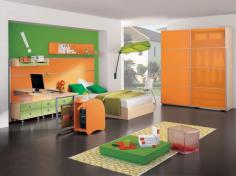The role of an interior designer involves the planning, designing, and execution of interior spaces to create functional, aesthetically pleasing, and comfortable environments. Interior designers work closely with clients to understand their needs, preferences, and budgetary constraints in order to develop designs that align with their vision.
Here are some key aspects of an interior designer's role:
Space Planning: Interior designers analyze and evaluate the available space to determine the most efficient and effective layout. They consider factors such as traffic flow, functionality, and zoning requirements to optimize the use of space.
Concept Development: Based on the client's requirements, interior designers develop a design concept that captures the desired look and feel of the space. This includes selecting color schemes, materials, furniture, lighting, and other design elements.
Detailed Drawings: Interior designers create detailed drawings and specifications, such as floor plans, elevations, and 3D renderings, to communicate their design ideas to clients, contractors, and other professionals involved in the project.
Material and Finishes Selection: Interior designers research and select appropriate materials, finishes, furnishings, and fixtures that align with the design concept and meet the client's functional and aesthetic requirements. They consider factors such as durability, sustainability, and budget.
Collaboration with Professionals: Interior designers often collaborate with architects, contractors, and other professionals to ensure that the design intent is properly executed. They coordinate and communicate with these stakeholders throughout the project to ensure a seamless implementation of the design.
Project Management: Interior designers oversee the project from start to finish, managing timelines, budgets, and resources. They coordinate with vendors, contractors, and suppliers to ensure timely delivery of materials and successful execution of the design plan.
Styling and Decoration: In addition to the overall design, interior designers also focus on the finer details of styling and decoration. They select and arrange accessories, artwork, and other decorative elements to enhance the overall aesthetic appeal of the space.
Overall, the role of an interior designer is to create functional, visually appealing, and harmonious interior spaces that meet the needs and preferences of their clients while adhering to budgetary and regulatory constraints.


